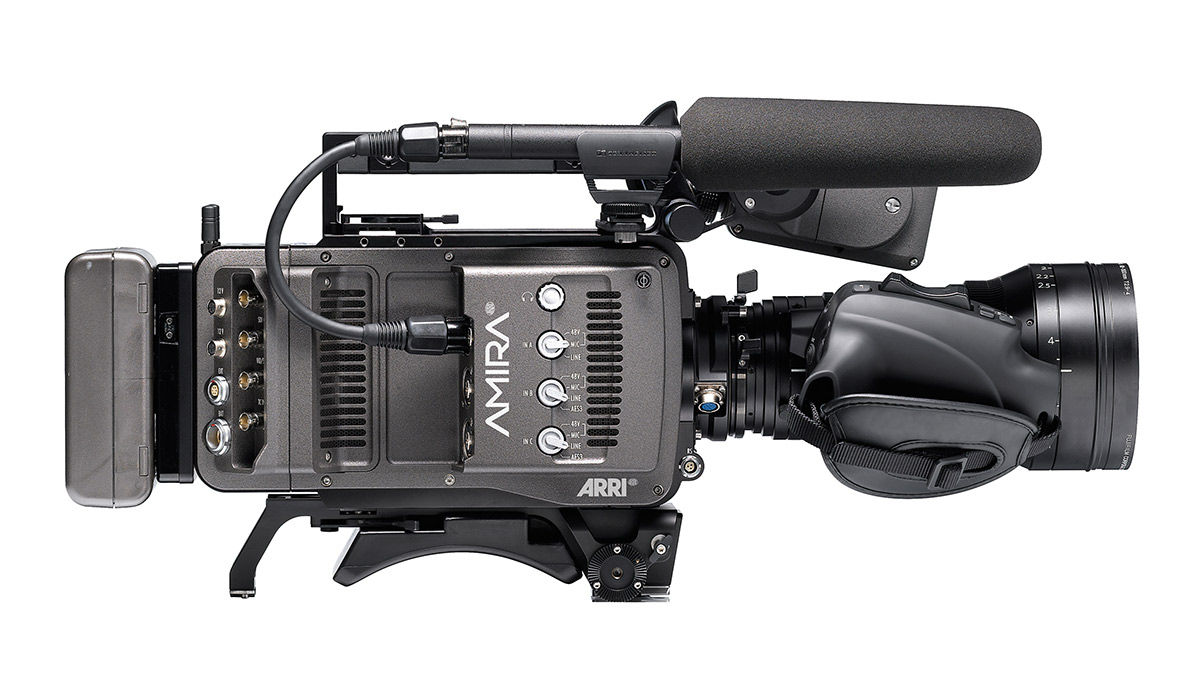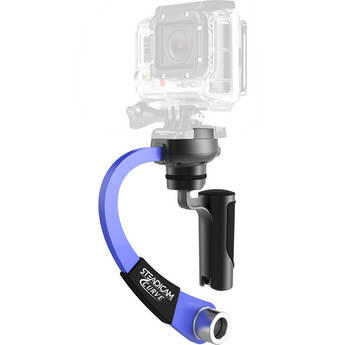15 Apr My Trip to NAB 2014
Uncategorized | Studio B TeamI had the privilege of attending the NAB (National Association of Broadcasters) Show in Las Vegas last week. It was my first experience at this particular trade show and I was blown away by the sheer size of it. The convention center has over 3,000,000 square feet of space, and you could spend multiple days in just one of the halls and not get to everything. So I moved quickly while doing my best to take in as much as possible within one day– no easy feat.

The central hall held most of the acquisition and production booths, i.e. hundreds of companies and organizations touting thousands of new products aimed at audio/video production, recording, and display. I barely made it through all of the central hall, caught one glimpse of the north hall, and then saved only about an hour for the south hall at the end of the day.

First Impressions:
Usually, people want to hear about the best new thing at NAB, but I don’t think there’s a single product that I would award as the most exciting or original. To me it seemed that it was a year of expanding and competition. For example, I couldn’t keep track of the number of different 3-axis gimbals I saw, akin to the Movi Freefly, or new quadcopter designs for that matter, a la the DJI Phantom. Both technologies are a year or two established, but now several other companies are seeing the demand and jumping on the bandwagon. Sure there are cheap knockoffs, but the overall quality I saw kept me encouraged that this competition is great for the independent filmmaker. There may not have been as many unique ideas this year at NAB, but the useful ones are continuing to be improved upon and made more affordable.
Besides the various camera rigs, the other winners in sheer quantity were LED lighting and hard plastic equipment cases. Running a rental business means that I’m far more interested in proper equipment storage and transport than most, so I had to check out every case solution I could. And to be honest, though each company claims that their unique plastic blend is more durable or their latches more user friendly, it’s hard to pick out many differences. The one that caught my eye was a little booth called Jason Cases. Jason makes custom pelican-style cases+inserts for different equipment packages like a Red Epic (seen below), Canon C300, or Movi Freefly. They are extremely functional, sleek, and a rentals manager’s dream.
Cinema Cameras:
Most of the buzz at NAB this year was directed towards the new cinema cameras. It seems like every other company is jumping in the ring to compete with their own take on 4k (BlackMagic, AJA, JVC, Sony, Panasonic, among others). And although many looked sharp, it’s so hard to say which will succeed and which will fail to find their niche. Many weren’t fully operational at NAB, others sat in glass cases rather than out on the floor for demonstrations, and the rest you still can’t accurately judge without taking the footage home with you to test the workflow and compare on a big screen.
BlackMagic impressed with a new 4k and new studio camera (seen below) with 10″ iPad-like screens.
The Arri Amira (below) was one of the more promising new cinema cameras, despite the lack of 4k resolution. I’ve been hearing about this one but finally got a chance to put it on my shoulder and give it a whirl. With the Arri pedigree, Alexa sensor, ProRes recording, and a smaller run-and-gun body, I think the Amira will do pretty well. It was a little heavier than I expected, partly due to the Fujinon lens, but it felt nice on my shoulder and the Arri shoulder mount and top handle are widely customizable. The interface is designed for simplicity with quick toggles and easy to reach programmable buttons, and I was thoroughly impressed with the 1280×1024 viewfinder with separate flip-out screen. The only drawbacks, like I’ve said before, seem to be the high price and perhaps the 2k resolution.


On the other end of the spectrum, the new AJA Cion (above) left me underwhelmed. Perhaps the jump from creating digital recorders to 4k cinema cameras is nothing to take lightly. This camera seemed to be rushed through production, with an ugly, oversimplified design and half-baked features. The left side of the camera (below) is woefully half-blank, with audio levels stuck randomly in the middle of the empty panel where there would be room for far more controls. It also wasn’t even ready for NAB, as I learned when I went to correct the white balance. Half the menu didn’t even work, and the tech told me that they were still working on that functionality before the release date. Unfortunately they’ll have to make major improvements before then to change my mind on the Cion.
Products I Liked:
Among the other products that impressed me were the EZ Slider Dolly (below) from EZFX. It’s like a Dana Dolly but extremely customizable and with vertical sliding options (video here).
PAGlink batteries, for their stackable form factor:
Newtek (above) put on a pretty good show demonstrating their Tricaster video switchers, and they had to because Livestream’s (below) new switcher, similar to the Tricaster 460, impressed me as well.
4k LED backdrops (above) and little mini-arc motorized sliders (below).
Sony all-in-one field reporter bundle (above) and the new Kino Flo Celeb 400q (rear controls seen below).
More Photos from the Floor:
At the GoPro booth (above). If only they gave away this car with their camera-a-day giveaways…
DP Philip Bloom (below) uses tripods for everything, even laptop stands. I need to work on that 4-buttons-undone look.
Blackmagic (above) had a popular booth and a ton of buzz going around the show about their new cameras. I didn’t get a chance to try out the new 4k model, though it looks promising.
In a break from the show floor, I attended a session covering Feature Filmmaking in the Age of YouTube (below).
Giant green cyclorama (above), and the smoothest (and goofiest-looking) steadicam rig out there, built into a segway (below).
Atomos (above) was definitely one of the more popular booths, partly due to their newest digital recorders (not pictured): the Shogun 4k and Ninja Star.
Most companies selling cameras had little scenes set up to test out their cameras, fully lit with actors and everything. Sony (below) and Canon especially went all out, with the two largest exhibits in the hall and multiple scenes to test with their wide selections of cinema, broadcast, and prosumer cameras.
Overall, it was a whirlwind of a day. I grabbed more pamphlets and business cards than I know what to do with, only because there was no way I was going to remember all of the great products and people I met. It definitely lived up to the hype as the event for filmmakers around the world, and I’d recommend everyone check out NAB one year if you get a chance. Just try to give yourself more than one day to take in everything, and then hey, if it’s not all that you hoped, there’s far worse places to be stuck than Las Vegas.











































